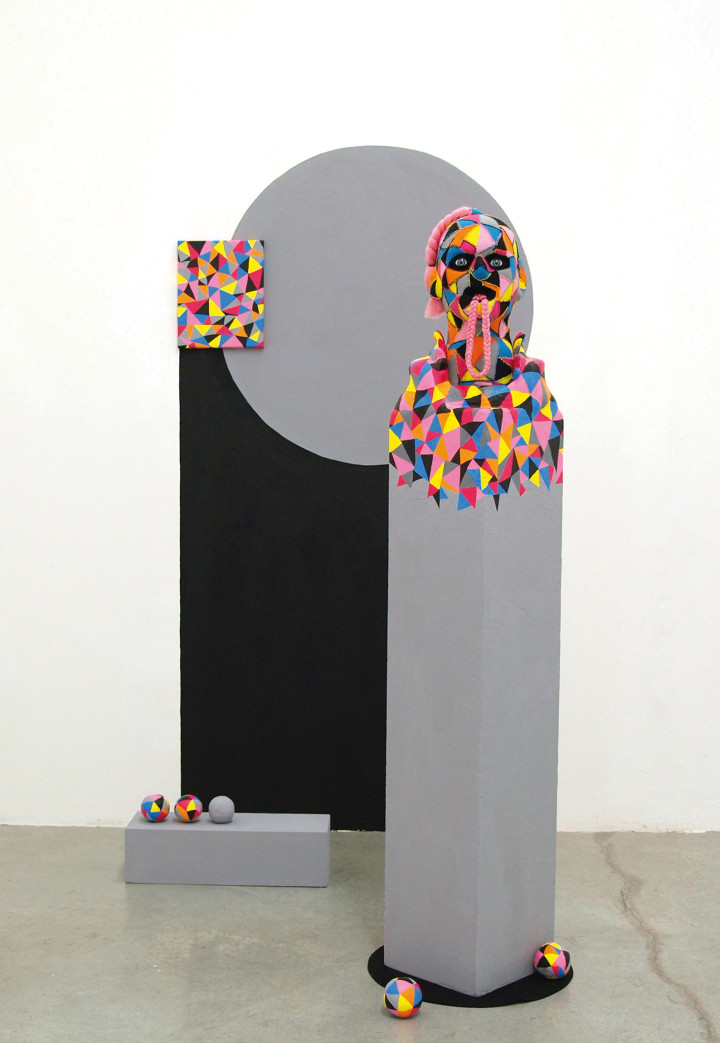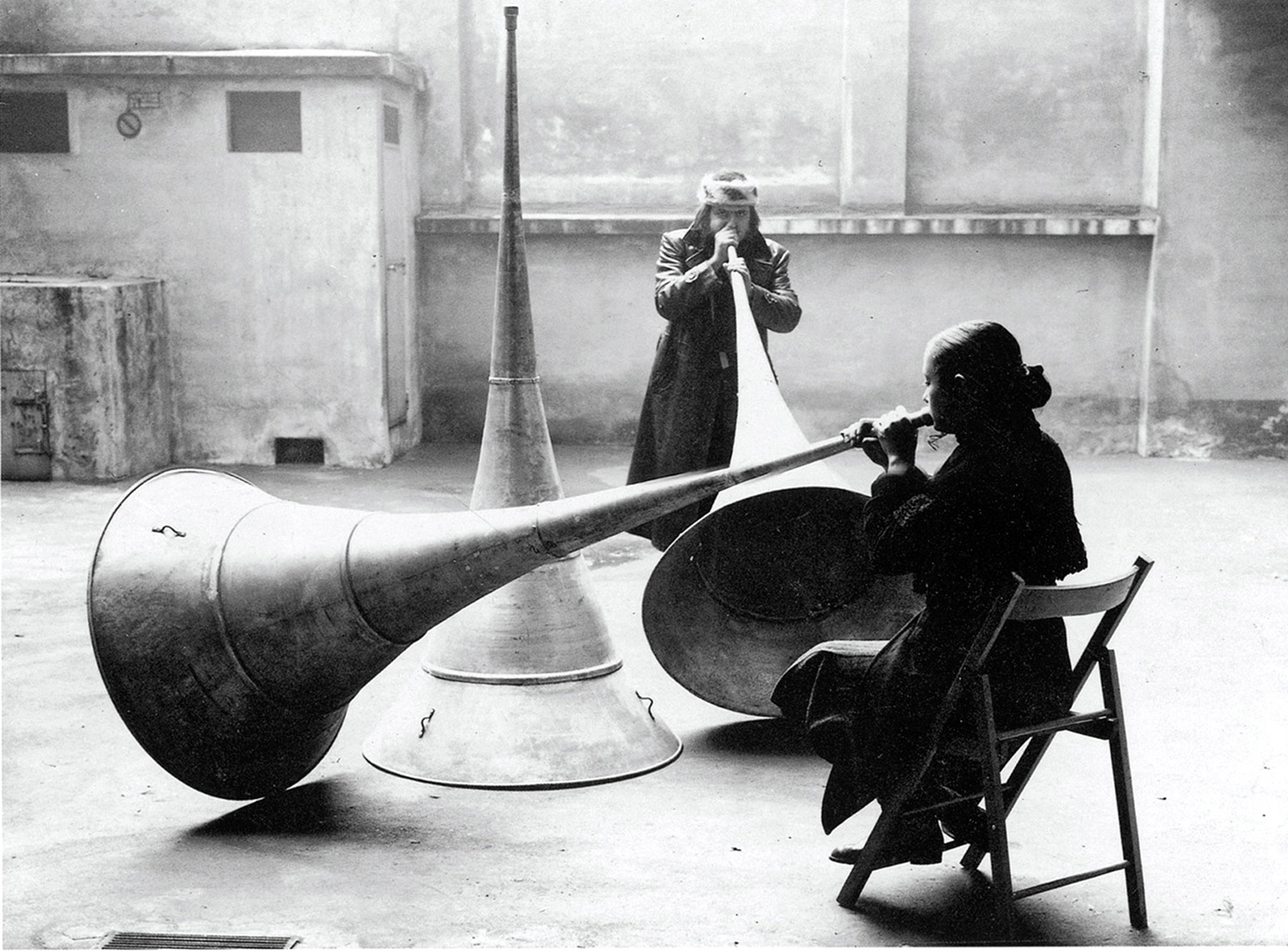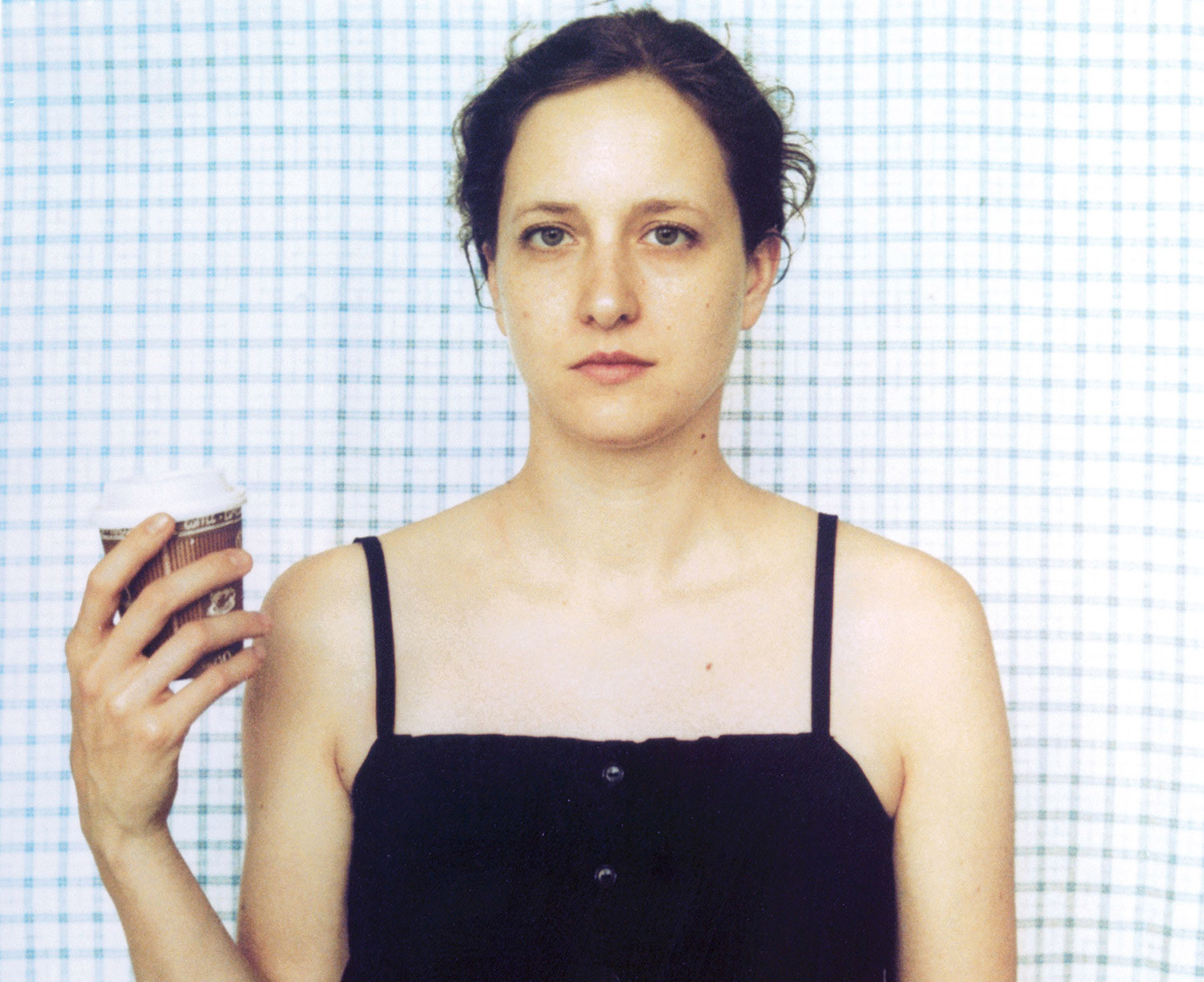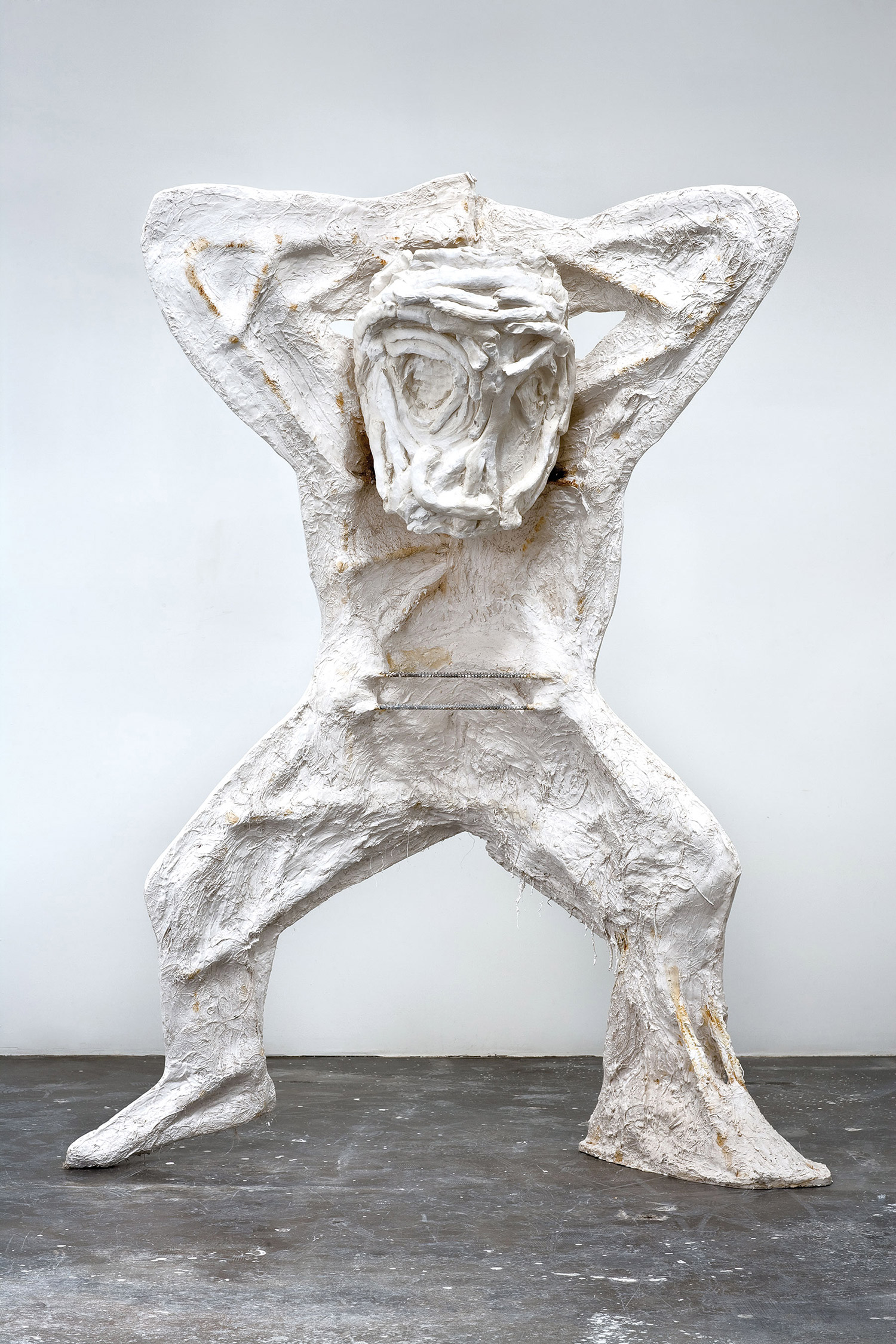
The Harlequin (2009).
Francesco Scasciamacchia: In the Commedia dell’ arte, professional players acted with masks. In your work the mask recurs as autonomous sculpture along with other elements to create an installation. What’s the semantic significance of the mask for you?
JB: The mask is a mode of transformation. In theater it can be a representation of something grotesque, beautiful, good or bad, but it can also be simply a means of disguise. A smiling exterior could be a disguise for something much more sinister — beauty unmasks the horrific. It is the infamous image of juxtaposed comedy and tragedy masks. I love the duality that masks symbolize, which feeds a lot of my practice. As human beings we are inherently both good and evil. We are conflicting and opposing forces, mind and body, and the mask expresses this rather well. I enjoy this tension and ruminate on this. A lot of my work is inspired by classical figurative sculpture. I take elements of the past and transform them into something of the present. Also, the ‘mask’ is a universally understood symbol that transcends cultures — it is theater, more visual than verbal.
FS: Do you think that the only way to get away from customs of painting is putting them into an “installative” dimension? Is this a prerogative in your work?
JB: In addition to sculpture and installation, my practice also includes painting. I come from there; often painting informs what I do. In recent work I have not so much tried to get away from the customs of painting as to enhance the link between painting and sculpture. I am really interested in this idea that the two support each other in their unification. I think painting is as relevant and important now as it has always been. Its high art status is particularly interesting to me when sitting alongside the everyday, craft materials that I use to make my sculptures.
FS: I saw you sewing your puppets, primping your masks. It’s like watching a costume designer. Can you imagine a storyline or narrative element while you work?
JB: The nature of embroidery and sewing means that a certain amount of planning is involved. However, I usually arrive at the finished work rather organically. I do not use patterns or templates for the sewn elements, and the whole process is usually led by a lot of making, editing and seeing what “fits.” I don’t imagine a storyline or narrative element in the work, but I do like the idea that each work has its own personality or character, and that they in turn have a relationship with each other. Whether it is a painting or sculpture, I am always looking for ways with which to inject life into them. For example adding hair or eyes to a work gives it an uncanny ability to perform and become alive — therefore allowing the work to touch on the defining questions of existence itself.





